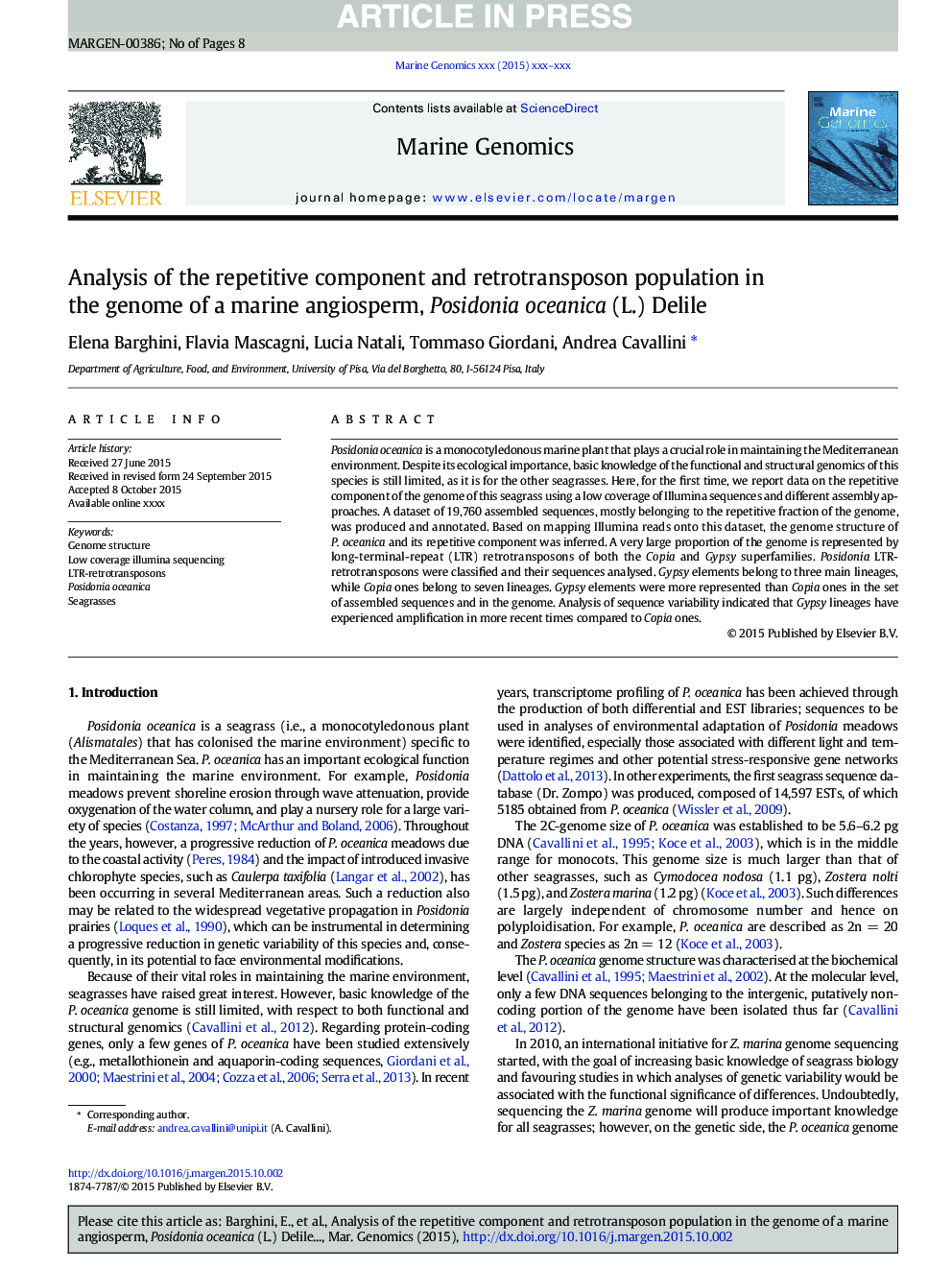| Article ID | Journal | Published Year | Pages | File Type |
|---|---|---|---|---|
| 10877933 | Marine Genomics | 2015 | 8 Pages |
Abstract
Posidonia oceanica is a monocotyledonous marine plant that plays a crucial role in maintaining the Mediterranean environment. Despite its ecological importance, basic knowledge of the functional and structural genomics of this species is still limited, as it is for the other seagrasses. Here, for the first time, we report data on the repetitive component of the genome of this seagrass using a low coverage of Illumina sequences and different assembly approaches. A dataset of 19,760 assembled sequences, mostly belonging to the repetitive fraction of the genome, was produced and annotated. Based on mapping Illumina reads onto this dataset, the genome structure of P. oceanica and its repetitive component was inferred. A very large proportion of the genome is represented by long-terminal-repeat (LTR) retrotransposons of both the Copia and Gypsy superfamilies. Posidonia LTR-retrotransposons were classified and their sequences analysed. Gypsy elements belong to three main lineages, while Copia ones belong to seven lineages. Gypsy elements were more represented than Copia ones in the set of assembled sequences and in the genome. Analysis of sequence variability indicated that Gypsy lineages have experienced amplification in more recent times compared to Copia ones.
Related Topics
Physical Sciences and Engineering
Earth and Planetary Sciences
Earth and Planetary Sciences (General)
Authors
Elena Barghini, Flavia Mascagni, Lucia Natali, Tommaso Giordani, Andrea Cavallini,
